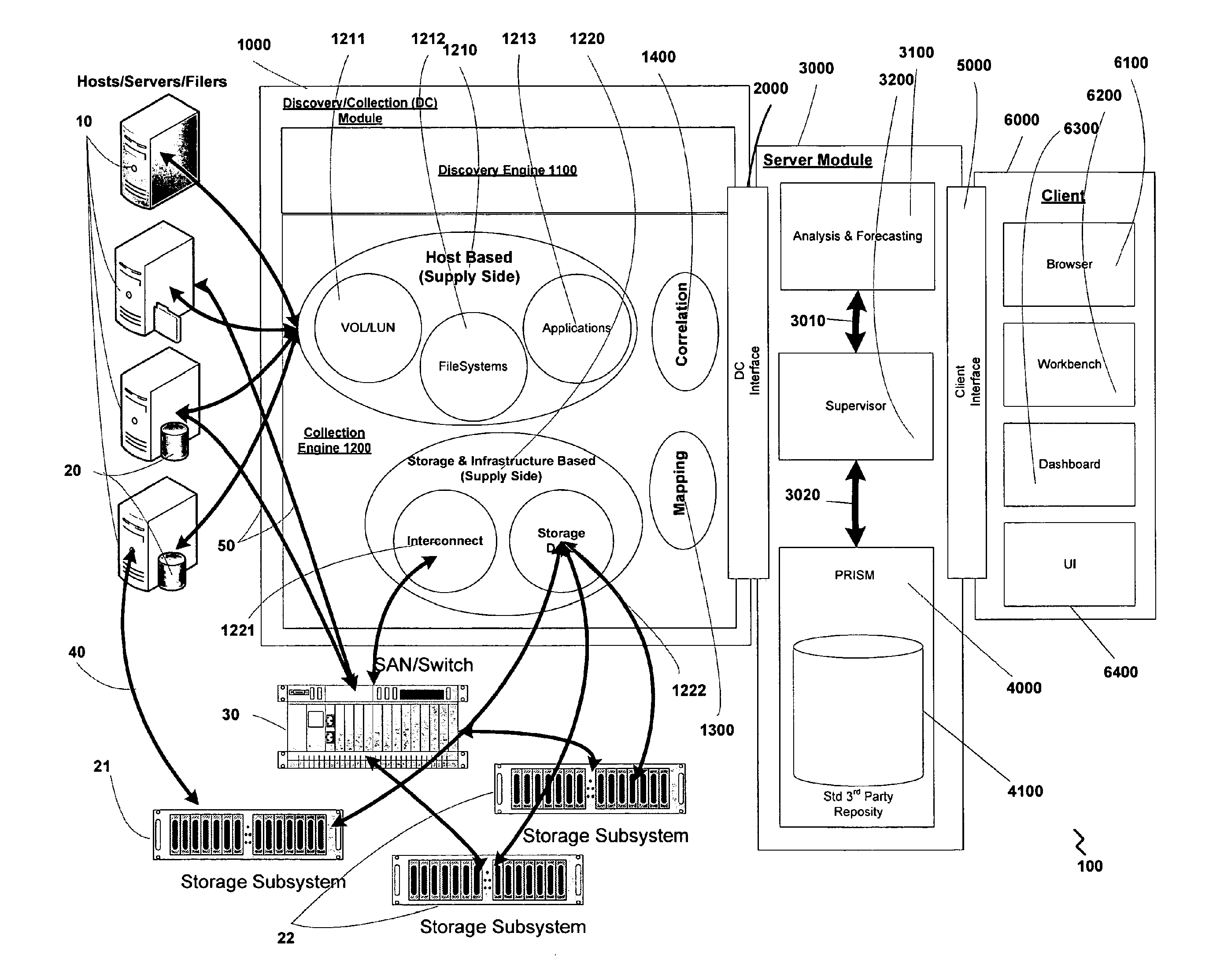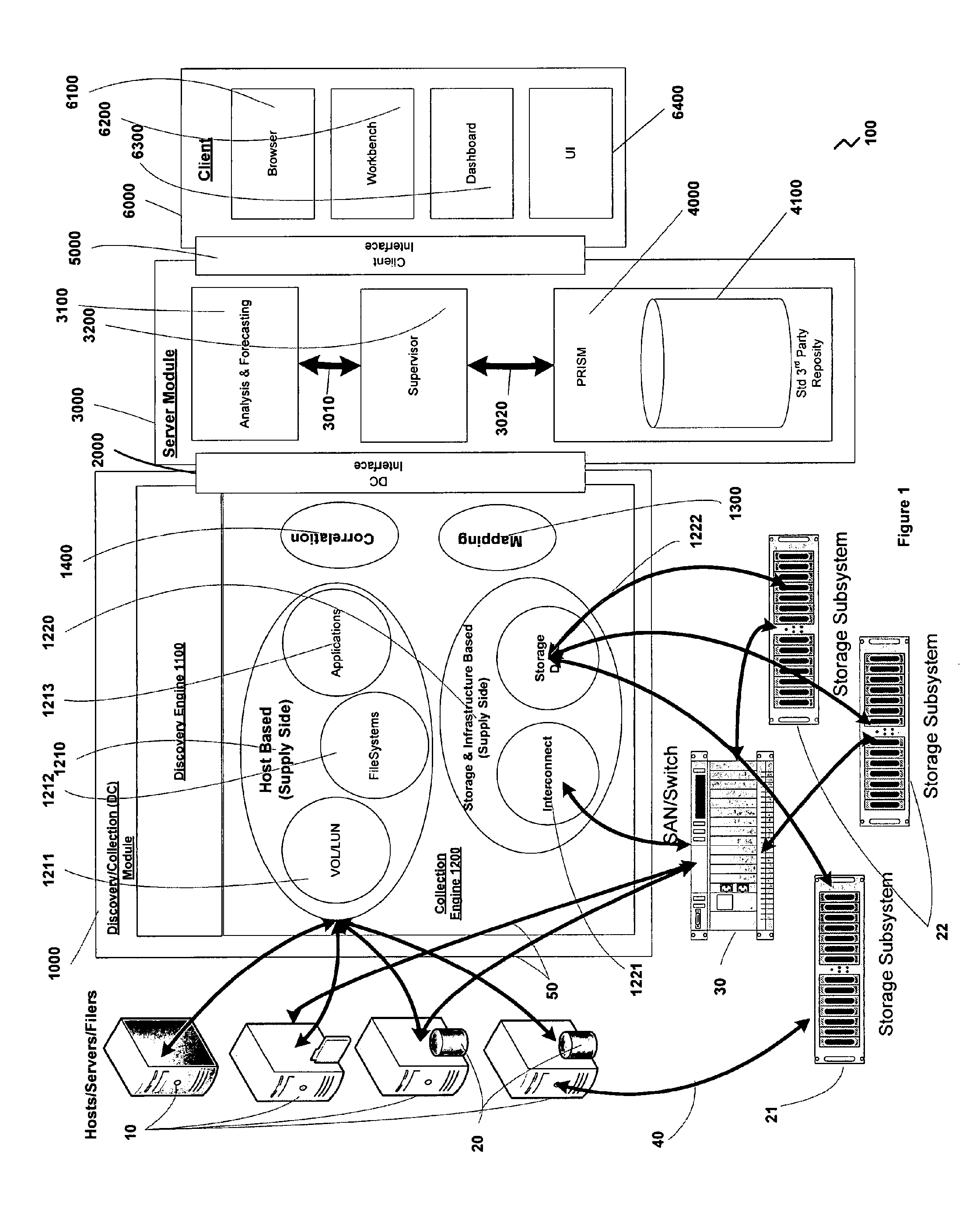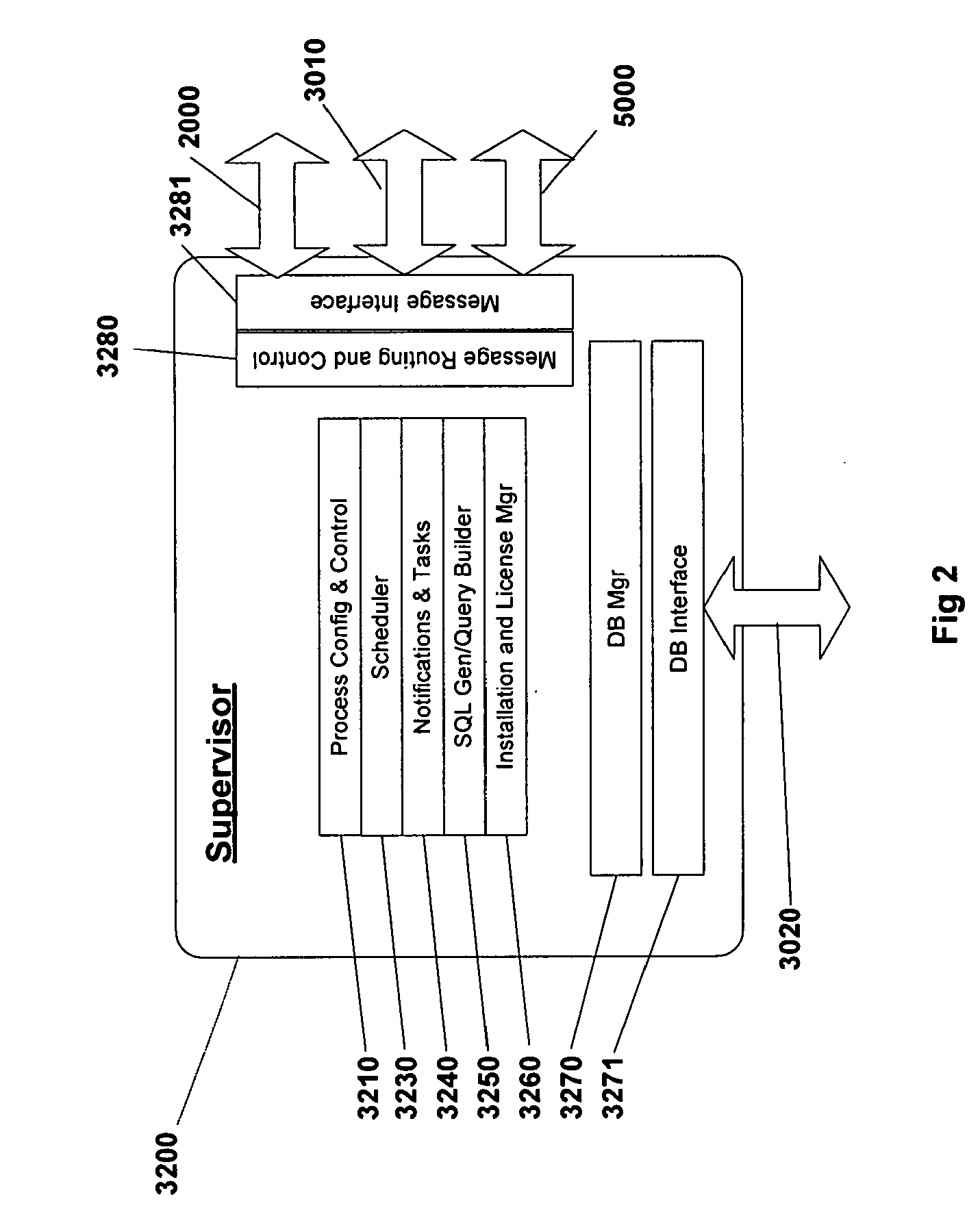Storage capacity planning
a storage capacity and planning technology, applied in the field of storage capacity planning, can solve the problems of increasing storage volume, affecting business functions, and affecting the ability of applications to store data, so as to achieve accurate levels of prediction and forecasting, facilitate deployment, and eliminate the possibility of affecting
- Summary
- Abstract
- Description
- Claims
- Application Information
AI Technical Summary
Benefits of technology
Problems solved by technology
Method used
Image
Examples
Embodiment Construction
[0032]FIG. 1 illustrates a system 100 for providing storage capacity management and planning in accordance with an embodiment of the present invention.
[0033]System 100 includes one or more host systems 10. Each host system 10 includes one or more processors and software applications, and one or more local 20 or remote storage elements 21, 22 are connected to host systems 10 directly 21 or indirectly 22 though a switching fabric 30.
[0034]System 100 also includes a discovery / collection (DC) module 1000; a server module 3000, including a relational database subsystem, known as a persistent repository with integrated schema mechanism) (PRISM) 4000; and client module 6000.
[0035]Server module 3000 interfaces to discovery / collection module 1000 via a DC interface 2000 as well as to the client module 6000 via a client interface 5000.
[0036]Discovery / collection module 1000 includes a collection engine 1200 and a discovery engine 1100. Discovery engine 1100 in one embodiment includes industry ...
PUM
 Login to View More
Login to View More Abstract
Description
Claims
Application Information
 Login to View More
Login to View More - R&D
- Intellectual Property
- Life Sciences
- Materials
- Tech Scout
- Unparalleled Data Quality
- Higher Quality Content
- 60% Fewer Hallucinations
Browse by: Latest US Patents, China's latest patents, Technical Efficacy Thesaurus, Application Domain, Technology Topic, Popular Technical Reports.
© 2025 PatSnap. All rights reserved.Legal|Privacy policy|Modern Slavery Act Transparency Statement|Sitemap|About US| Contact US: help@patsnap.com



